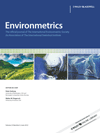
ENVIRONMETRICS
Scope & Guideline
Innovating Ecological Modeling for a Sustainable Future
Introduction
Aims and Scopes
- Statistical Modeling of Environmental Data:
The journal emphasizes the development and application of statistical models to analyze various types of environmental data, including time series, spatial data, and multivariate data. - Spatial and Spatiotemporal Analysis:
A core focus is on spatial and spatiotemporal modeling techniques that capture the inherent geographical and temporal dependencies in environmental data. - Bayesian Methods in Environmental Science:
There is a strong emphasis on Bayesian approaches for inference and modeling in environmental contexts, showcasing the flexibility and robustness of Bayesian statistics. - Machine Learning and Data Science Applications:
Environmetrics explores the intersection of traditional statistical methods with modern machine learning techniques to improve data analysis and prediction in environmental studies. - Ecological and Environmental Risk Assessment:
The journal publishes research related to assessing risks associated with environmental factors, including pollution and climate change, using statistical methodologies. - Innovative Sampling and Survey Design:
The development of new methods for sampling design in environmental surveys is a recurring theme, highlighting the importance of effective data collection strategies.
Trending and Emerging
- Machine Learning Techniques in Environmental Analytics:
There is a growing trend towards incorporating machine learning methods for predictive modeling and data analysis in environmental contexts, showcasing their potential for handling large and complex datasets. - Integrated Modeling Approaches:
Emerging papers highlight the integration of various statistical methods, such as combining Bayesian modeling with machine learning, to address multifaceted environmental issues. - Climate Change and Extreme Events Analysis:
Research focusing on the statistical analysis of climate change impacts and extreme environmental events is increasingly relevant, reflecting global priorities in environmental science. - Functional Data Analysis:
The use of functional data analysis techniques is emerging as a significant theme, particularly in relation to environmental data that varies over time and space. - Ecological Modeling and Biodiversity Assessment:
There is increasing interest in statistical methods that support ecological modeling and biodiversity assessments, reflecting a broader concern for conservation and ecosystem management. - Real-Time Data Processing and Analysis:
The trend towards real-time data analysis, particularly in the context of environmental monitoring and disaster response, is gaining traction, emphasizing the need for timely decision-making.
Declining or Waning
- Traditional Frequentist Methods:
There seems to be a noticeable decline in the publication of papers that focus solely on traditional frequentist statistical methods, as the journal shifts towards more Bayesian and machine learning approaches. - Basic Descriptive Statistics:
Papers emphasizing basic descriptive statistical analyses without advanced modeling techniques are becoming less frequent, indicating a move towards more complex analytical frameworks. - General Environmental Monitoring Techniques:
While monitoring remains important, the journal shows a waning interest in generic monitoring techniques in favor of more specialized and methodological innovations. - Simple Regression Models:
The use of simple linear regression models for environmental data analysis appears to be declining, as researchers increasingly adopt more sophisticated modeling techniques. - Purely Theoretical Statistical Developments:
Research focused solely on theoretical advancements in statistics without practical applications to environmental problems is less prominent in recent publications.
Similar Journals

Journal of Survey Statistics and Methodology
Pioneering New Paths in Survey StatisticsJournal of Survey Statistics and Methodology, published by Oxford University Press Inc, is a pivotal platform for advancing research in the fields of Applied Mathematics, Social Sciences, and Statistics. With its ISSN 2325-0984 and E-ISSN 2325-0992, this journal has firmly established itself since its inception in 2013, achieving a remarkable Q1 quartile ranking across various disciplines in 2023, indicating its significant impact and prestige in the academic community. It serves as a key resource for researchers and practitioners committed to enhancing survey methodology, statistical practices, and data-driven decision-making processes. The journal provides a comprehensive assembly of scholarly articles, methodological advancements, and theoretical insights, aimed at enriching the landscape of survey statistics and related domains. Scholars are encouraged to contribute and stay abreast of the latest findings that shape the future of survey research and methodology.
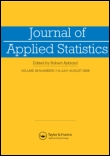
JOURNAL OF APPLIED STATISTICS
Illuminating practical methodologies for today's data-driven world.JOURNAL OF APPLIED STATISTICS, published by Taylor & Francis Ltd, is a prestigious scholarly resource that has been at the forefront of advancing the field of statistics since its inception in 1970. With ISSN 0266-4763 and E-ISSN 1360-0532, this esteemed journal focuses on the application of statistical methods across various disciplines, emphasizing practical implementations that provide significant insights into real-world problems. As a Q2 journal in both Statistics and Probability and Statistics, Probability and Uncertainty, it holds remarkable standings in Scopus, with ranks in the 77th and 74th percentiles, respectively. Researchers and professionals will find a wealth of rigorous methodologies and innovative analyses within its pages, aiming to bridge the gap between theory and practice. Although it adopts a traditional subscription model, its extensive archive—from 1970 to the present—offers invaluable resources for statisticians and data analysts. The journal serves as an essential platform for disseminating impactful research, making it a vital tool for students, researchers, and practitioners committed to the advancement of statistical science.

Austrian Journal of Statistics
Unlocking the Power of Data Analysis and InterpretationAustrian Journal of Statistics, published by the AUSTRIAN STATISTICAL SOC, serves as a prominent platform for disseminating innovative research in the fields of statistics and applied mathematics. Established as an open-access journal in 1996, it aims to promote the exchange of knowledge and advancements among researchers, academics, and practitioners, particularly in Austria and beyond. With an ISSN of 1026-597X, this journal has gained recognition despite its current standing in the lower quartiles in various Scopus rankings. It covers a wide breadth of topics including statistics, probability, and uncertainty, appealing to a diverse audience of researchers aiming to enhance their understanding of these critical disciplines. By offering unrestricted access to its content, the Austrian Journal of Statistics provides invaluable resources for both emerging and established voices in the field, making it a vital source for academics and professionals alike. Research published here contributes to the ongoing dialogue surrounding statistical methodologies and applications, making it indispensable for anyone engaged in data analysis and interpretation.
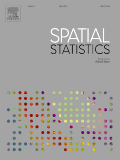
Spatial Statistics
Transforming Data into Spatial UnderstandingSpatial Statistics is a premier journal published by ELSEVIER SCI LTD, focusing on innovative methodologies and applications in the realm of statistical analysis within spatial contexts. With an ISSN of 2211-6753, the journal has established itself as a significant contributor in its field since its inception in 2012, and continues to thrive, with its next volume projected through 2024. It holds a respectable Q2 ranking across several categories, including Computers in Earth Sciences, Management, Monitoring, Policy and Law, and Statistics and Probability, affirming its impact and relevance to researchers and professionals alike. The journal's commitment to publishing high-quality research enables scientists to advance understanding of spatial phenomena, facilitating informed decision-making in various applications ranging from environmental science to urban planning. As part of a robust academic community, Spatial Statistics invites submissions that push the boundaries of conventional statistical techniques, ensuring that the latest findings contribute significantly to the discipline's body of knowledge.

Statistics in Biosciences
Driving Innovation at the Intersection of Stats and Life SciencesStatistics in Biosciences is a distinguished journal published by Springer, focusing on the innovative interplay between statistical methodologies and biosciences. Established in 2009, this journal aims to provide a platform for the dissemination of cutting-edge research in statistical applications within biochemistry, genetics, and molecular biology. With an impressive impact factor and a distinguished ranking in multiple categories, including Q2 in Biochemistry, Genetics and Molecular Biology (miscellaneous) and Q3 in Statistics and Probability, it serves as a crucial resource for researchers, professionals, and students seeking to deepen their understanding of statistical applications in biological contexts. The journal is accessible through traditional subscription models, ensuring that high-quality research remains available to a wide audience. Featuring contributions that advance statistical theory and application in the biosciences, Statistics in Biosciences is committed to fostering collaboration and innovation in a rapidly evolving scientific landscape.
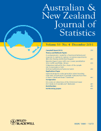
AUSTRALIAN & NEW ZEALAND JOURNAL OF STATISTICS
Advancing Statistical Knowledge Across Australia and New ZealandAUSRALIAN & NEW ZEALAND JOURNAL OF STATISTICS, published by Wiley, stands as a significant platform for the dissemination of statistical knowledge and applications, specifically within the realms of statistics and probability. With an impact factor reflective of its quality and standing, the journal operates in a Q3 category for both Statistics and Probability, as well as Statistics, Probability, and Uncertainty, positioning it among the important scholarly resources in its field. As a valuable resource for researchers, professionals, and students, the journal encourages the submission of innovative research articles that push the boundaries of statistical science. Offering both print and open access options, it ensures broad accessibility, promoting a culture of collaboration and knowledge sharing across the global statistical community. Covering research from 1998 to 2024, it remains dedicated to advancing understanding in statistical methodologies and their applications, cementing its role in fostering academic discourse and practical advancements in the field.

Chilean Journal of Statistics
Transforming data into knowledge for informed decisions.The Chilean Journal of Statistics is a vital resource for researchers, professionals, and students dedicated to the field of statistics and probability. Published by SOC CHILENA ESTADISTICA-SOCHE, this journal serves as a platform for the dissemination of innovative research and advancements in statistical methodologies, data analysis, and applications. With an ISSN of 0718-7912 and E-ISSN 0718-7920, the journal features contributions from the statistical community in Chile and beyond, reflecting its growing influence as evidenced by its classification in the Q3 quartile for 2023. Operating out of Chile, specifically from Santiago, the journal aims to converge its scope from 2019 to 2024 on providing high-quality, peer-reviewed articles that can inform and inspire academic and professional practices. While it is not an open-access journal, it remains a crucial outlet for impactful statistical research, fostering a deeper understanding of statistical concepts and their real-world applications.
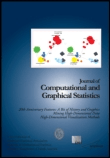
JOURNAL OF COMPUTATIONAL AND GRAPHICAL STATISTICS
Connecting researchers to the latest in statistical innovation.JOURNAL OF COMPUTATIONAL AND GRAPHICAL STATISTICS is a premier academic publication dedicated to advancing the fields of computational statistics and graphical data representation. Published by Taylor & Francis Inc, this journal stands out with its impressive Q1 rankings in Discrete Mathematics and Combinatorics, Statistics and Probability, and Statistics, Probability and Uncertainty, reflecting its high impact and relevance in contemporary research. Since its inception in 1992, the journal has been a vital resource for researchers, professionals, and students alike, with its rigorous peer-reviewed articles contributing significantly to the science of data analysis and visualization. With a Scopus ranking placing it within the top tiers of its category, the journal is committed to disseminating high-quality research that promotes innovation and methodological advancement. Note that the journal currently follows a traditional subscription model, ensuring focused and curated content for its readers. As it approaches the horizon of 2024, the JOURNAL OF COMPUTATIONAL AND GRAPHICAL STATISTICS continues to foster scholarly discourse and discoveries, making it an essential platform for anyone involved in statistics and data science.

ENVIRONMENTAL AND ECOLOGICAL STATISTICS
Bridging ecology and statistics for impactful research.ENVIRONMENTAL AND ECOLOGICAL STATISTICS, published by SPRINGER, stands as a premier journal dedicated to advancing the fields of environmental science and statistical methodologies. With an ISSN of 1352-8505 and an E-ISSN of 1573-3009, this journal has continually provided a platform for innovative research and interdisciplinary studies since its inception in 1994. Operating from the Netherlands, it enjoys a significant impact within the academic community, reflected in its impressive Q2 rankings across various categories including Environmental Science and Statistics. The journal maintains a strong focus on the application of statistical techniques to ecological and environmental problems, fostering an environment for discourse that is both robust and insightful. Although it does not currently offer open access, the depth and quality of research published within its pages position it as a vital resource for researchers, professionals, and students alike, eager to understand and address the complexities of environmental data analysis up to the year 2024.

Journal of Official Statistics
Informing the Global Community with Open Access StatisticsThe Journal of Official Statistics, published by SAGE Publications Inc, is a premier open-access journal that has been fostering advancements in the field of statistics since its inception. With its focus on disseminating high-quality research from 1986 to present, this journal provides a vital platform for statistical practices, innovations, and methodologies applicable to various domains, including governmental and organizational data analysis. Recognized as a Q2 journal in the Statistics and Probability category with a Scopus ranking of #143 out of 278, the Journal of Official Statistics boasts a significant impact in informing statisticians and practitioners alike. Located in Sweden, this journal has embraced open access since 2013, ensuring that its comprehensive and research-driven content is accessible to a global audience. Whether you are a researcher, professional, or student, this journal serves as an essential resource for staying informed about the latest trends and discussions in the official statistical community.